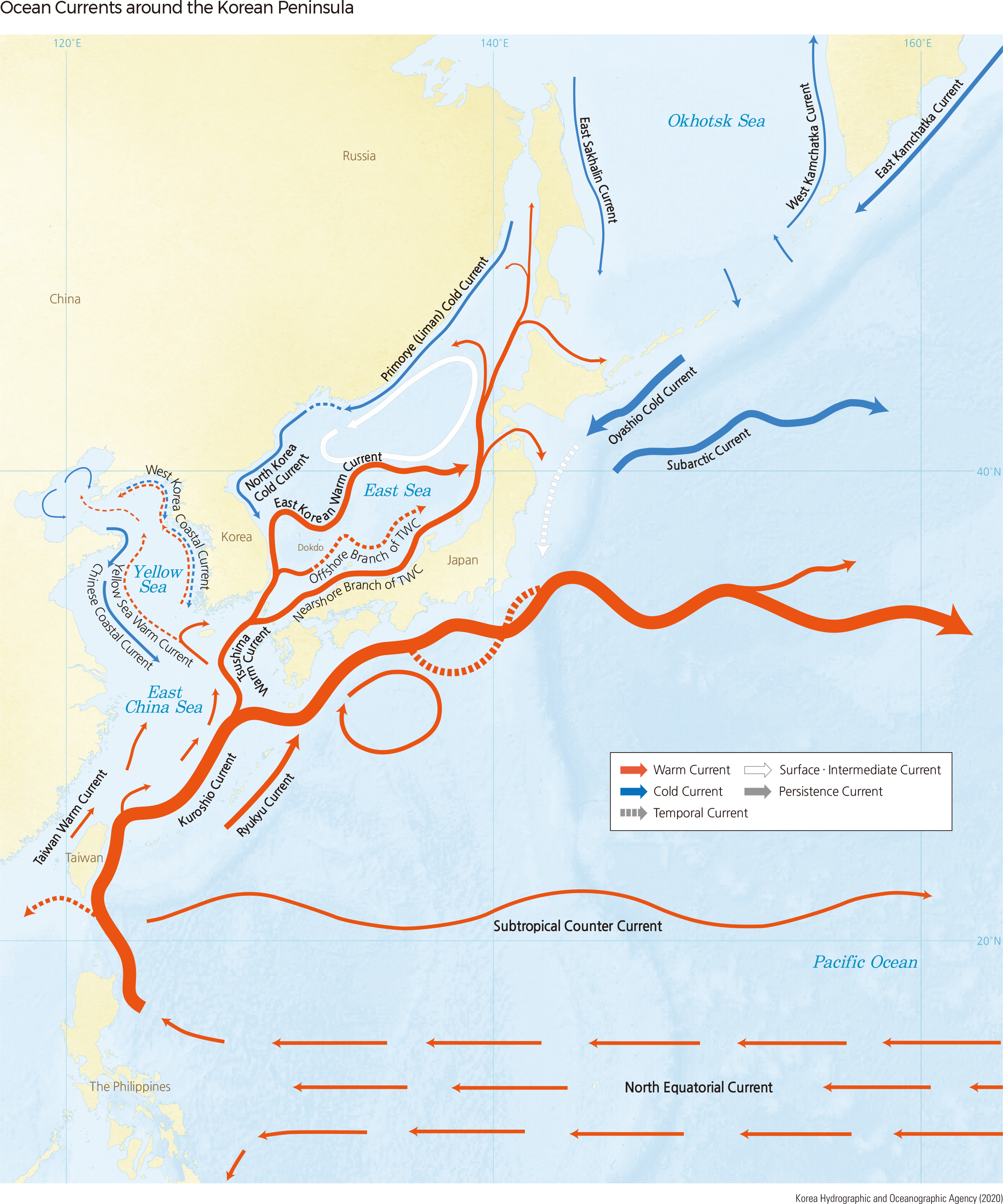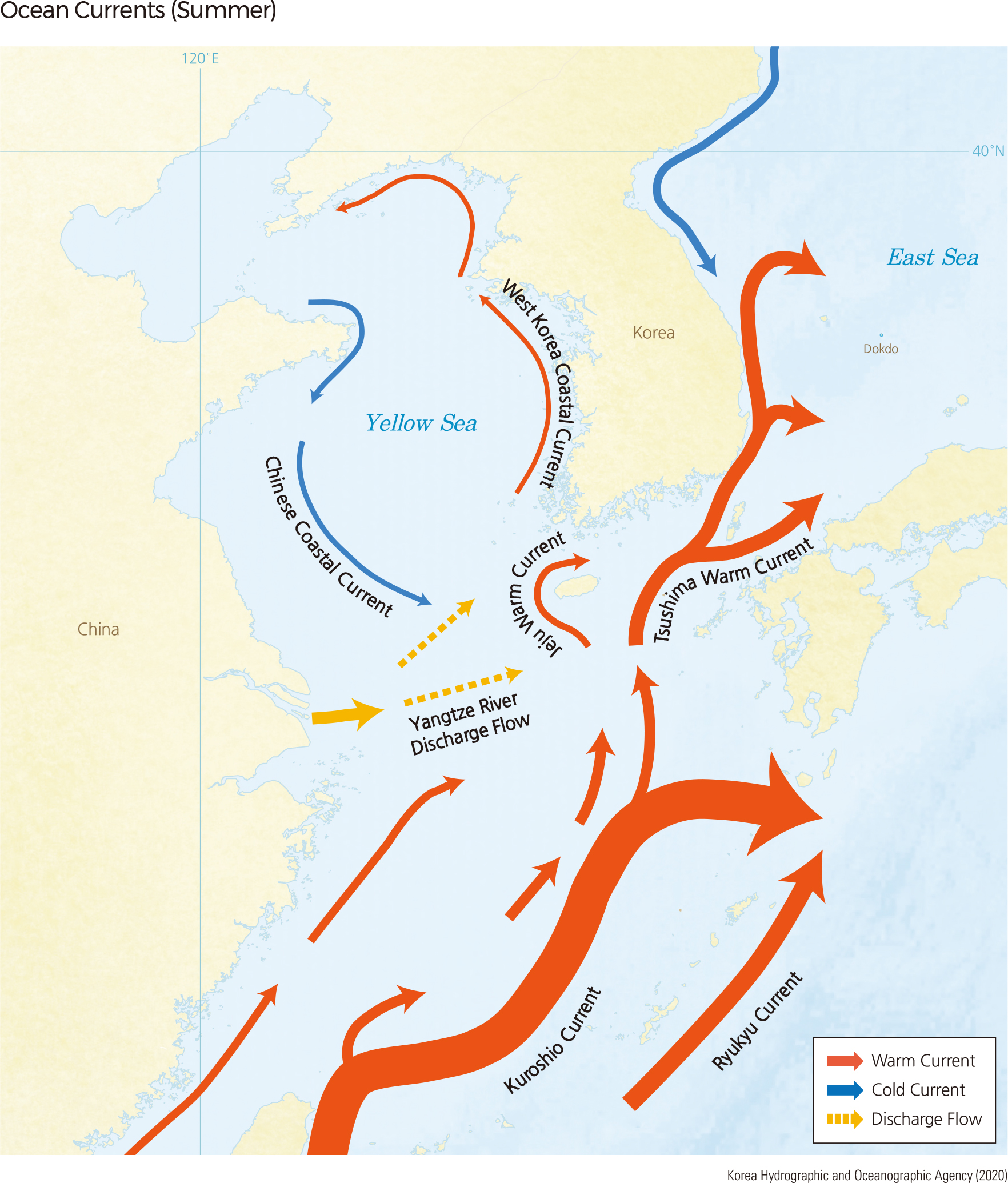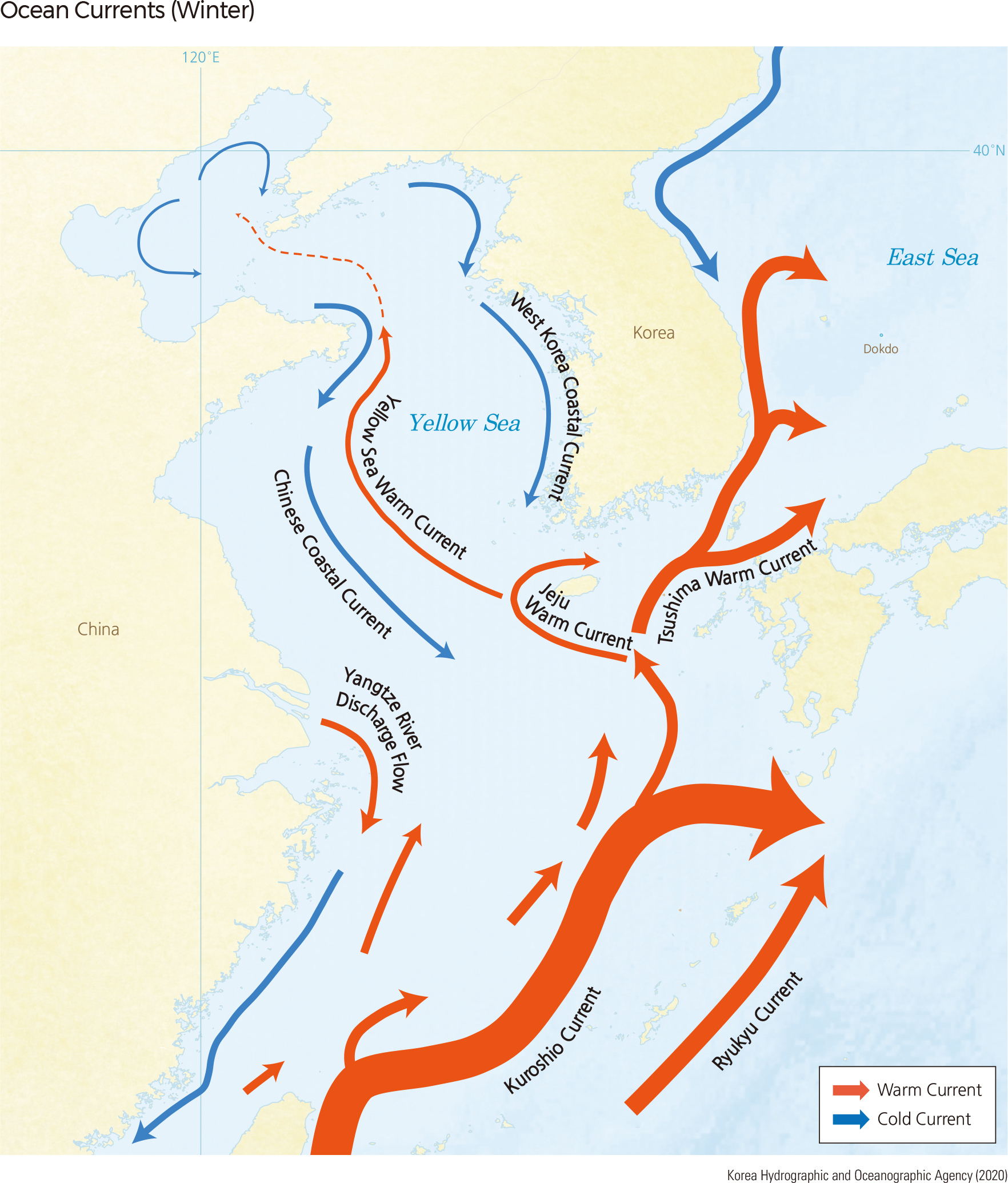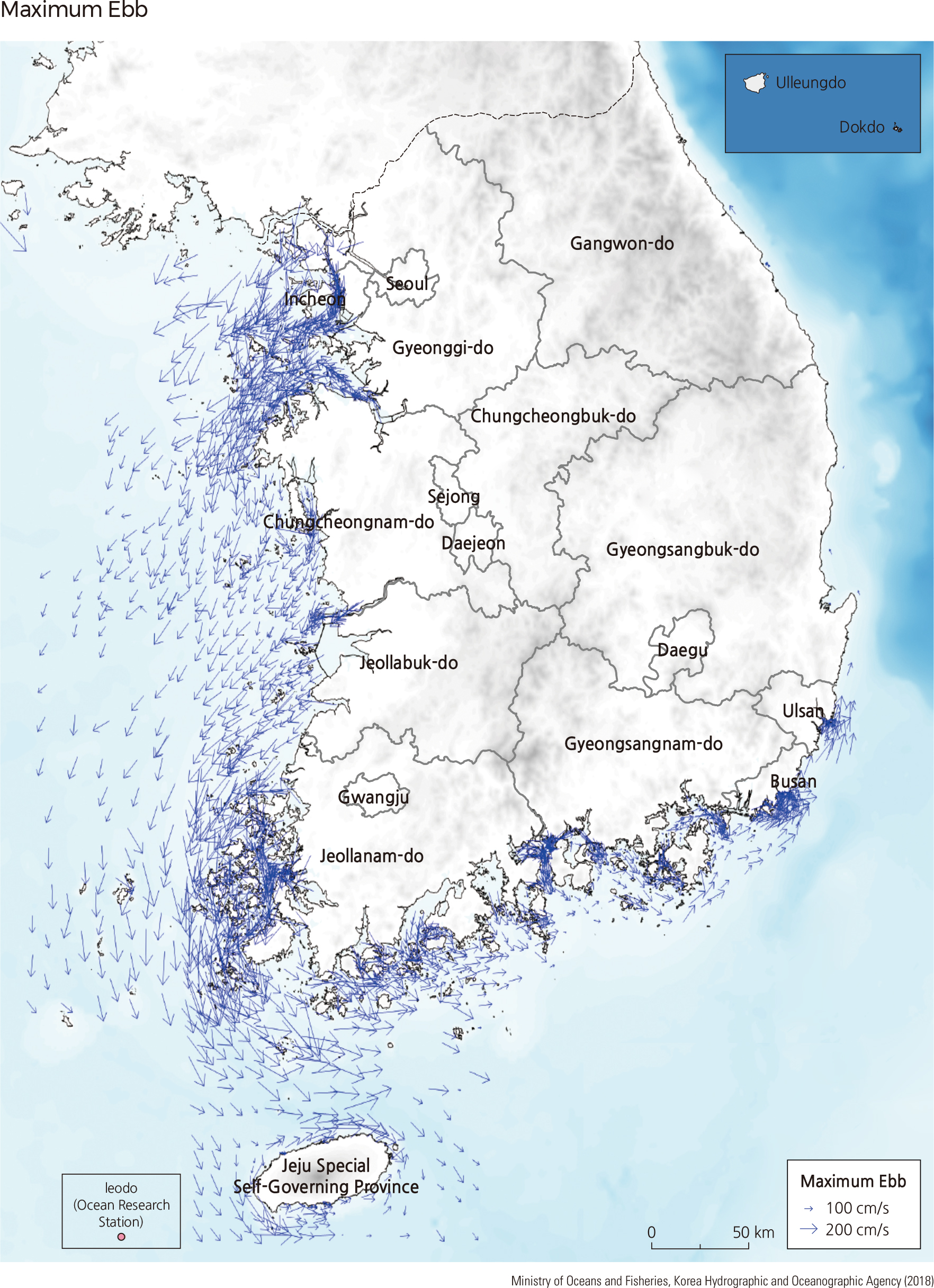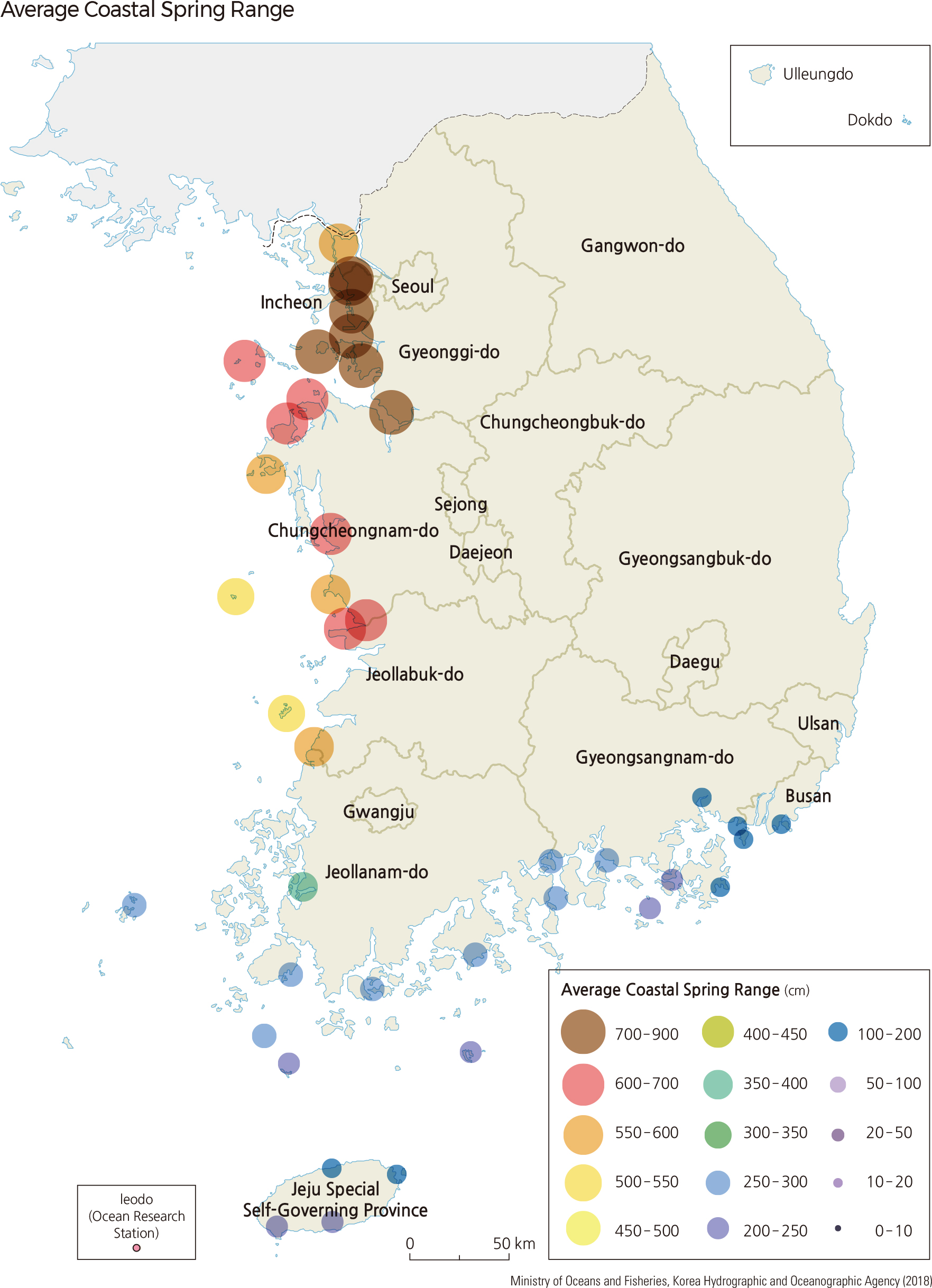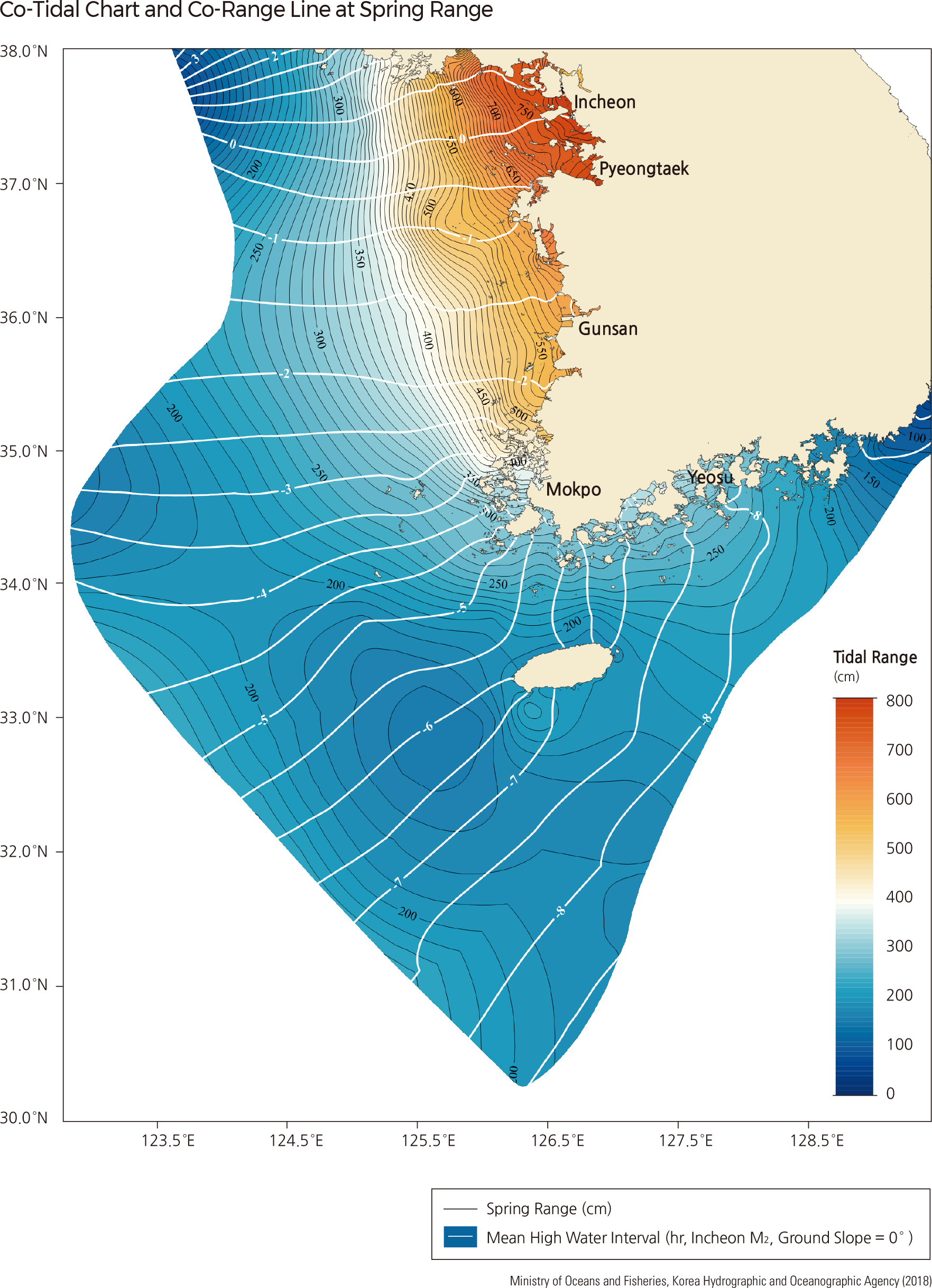English II 2020
The Korean Peninsula is influenced by the Yellow Sea Warm Maximum Flood Maximum Ebb Current, East Korean Warm Current, and Tsushima Warm Current, which are all branches of the Kuroshio Current. The Kuroshio Current is a western boundary current that is the second-largest warm current after the Gulf Stream. It starts off at the eastern part of Taiwan in the western Pacific Ocean and flows to the north of Japan. It has high water temperatures of 20–30˚C and high salinity of 34–34.8‰.
The Yellow Sea Warm Current, which branches north off the Kuroshio Current, passes through the China Liaodong Peninsula via Heuksando and Baengnyeongdo of Korea, and reaches Bohai Bay of China when it becomes stronger in the summer. It grows weaker and changes into coastal water during autumn, heads south, and finally flows east along the Jeju Strait.
The Tsushima Current branches off the Kuroshio Current in the East China Sea and flows north along the East Sea. Characterized by high water temperature and high density, it lacks the original black color of the Kuroshio Current and is instead tinged cobalt-blue. It causes a large amount of snow in the Yeongdong area of Korea.
The East Korean Warm Current branches off the Tsushima Warm Current at the east end of the Korea Strait and flows north along the southeast coast of the Korean Peninsula. It mixes with the North Korea Cold Current at the northern latitudes of 36–38˚ and changes direction toward the open sea to the southeast. The boundary between the two currents changes continuously and forms a large eddy in the East Sea. Afterward, the current changes direction to flow northeast and finally rejoins the Tsushima Warm Current.
The Primorye (Liman) Cold Current begins in the vicinity of the Russian Tatar Strait and flows south along the Eurasian continent to the East Sea. While there are several theories on its formation, it is most commonly believed that the Tsushima Current cools as it flows north through the East Sea and mixes with the freshwater of the Amur River as it flows south. The Primorye Cold Current, which gets its name from the Russian term that refers to the mouth of a great river, has a low temperature and low salinity and is inhabited by an abundance of cold sea fish species.
The North Korea Cold Current is an extension of the Liman Cold Current that flows southwest along the east coast of North Korea. During the summer, it reaches up to the Wonsan area of North Korea. The current is strengthened during the winter, and its effects reach as far south as Gangwon-do of South Korea. The current meets with The East Korean Warm Current flowing to the north to form a water mass boundary that is rich in fish species. This current sinks at the coast of Gyeongsangbuk-do and becomes a bottom current. In 2020, the Korea Hydrographic and Oceanographic Agency distributed schematic current maps to deliver accurate ocean current information. |
